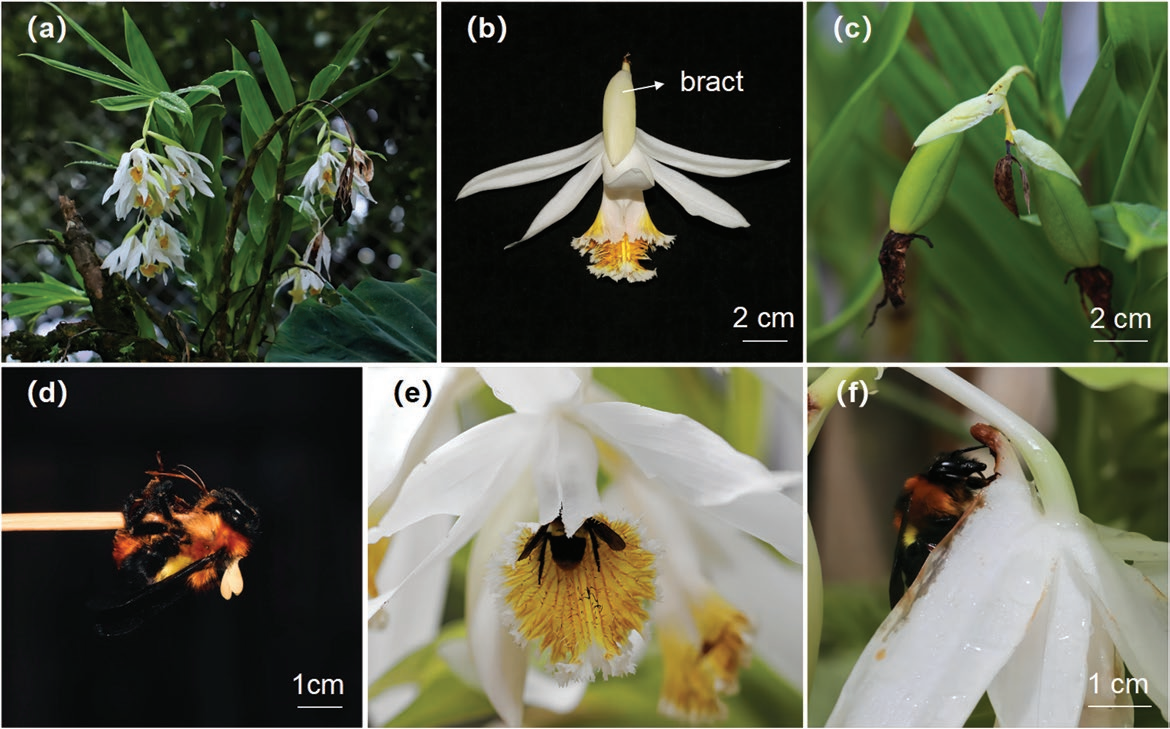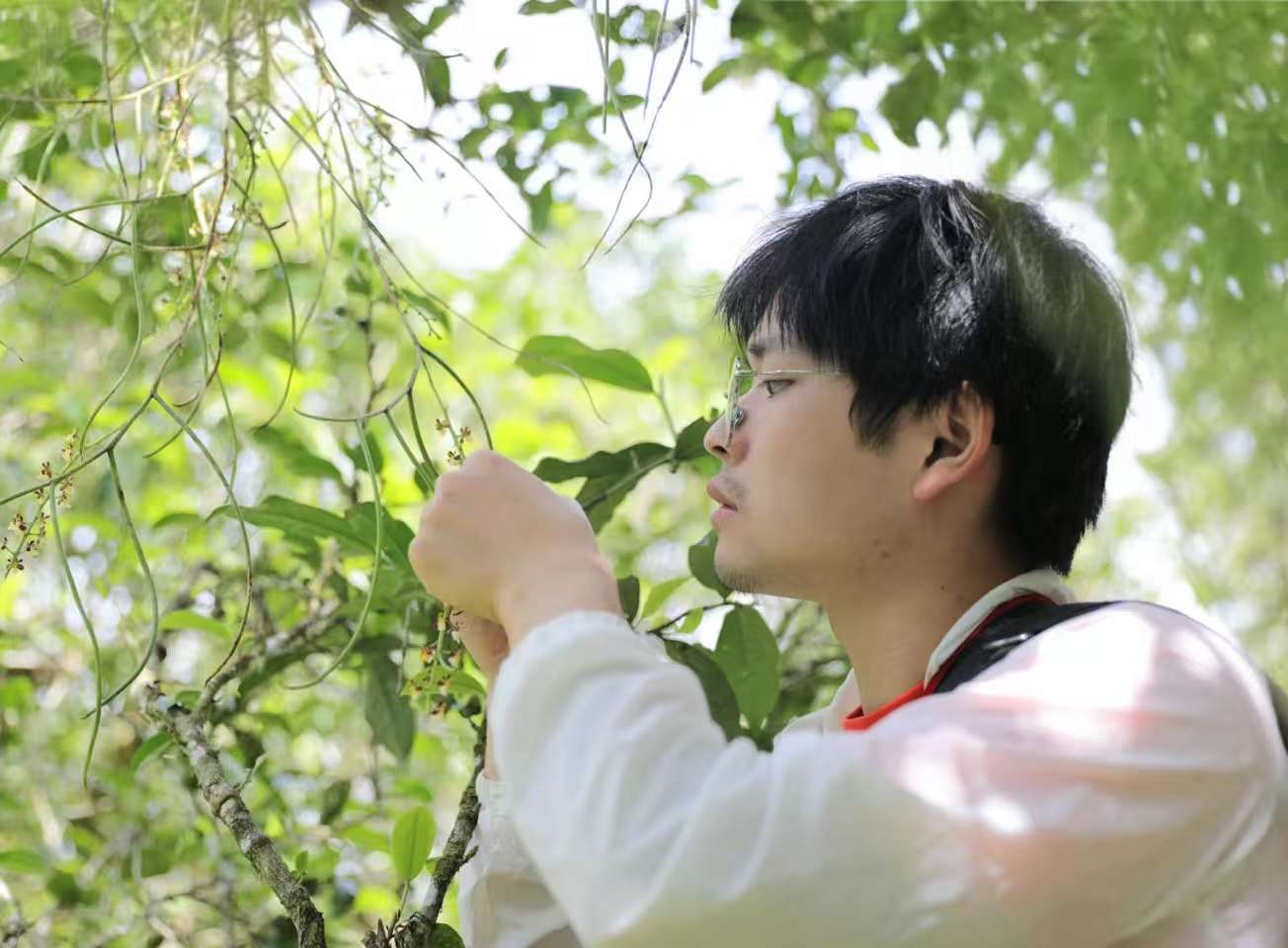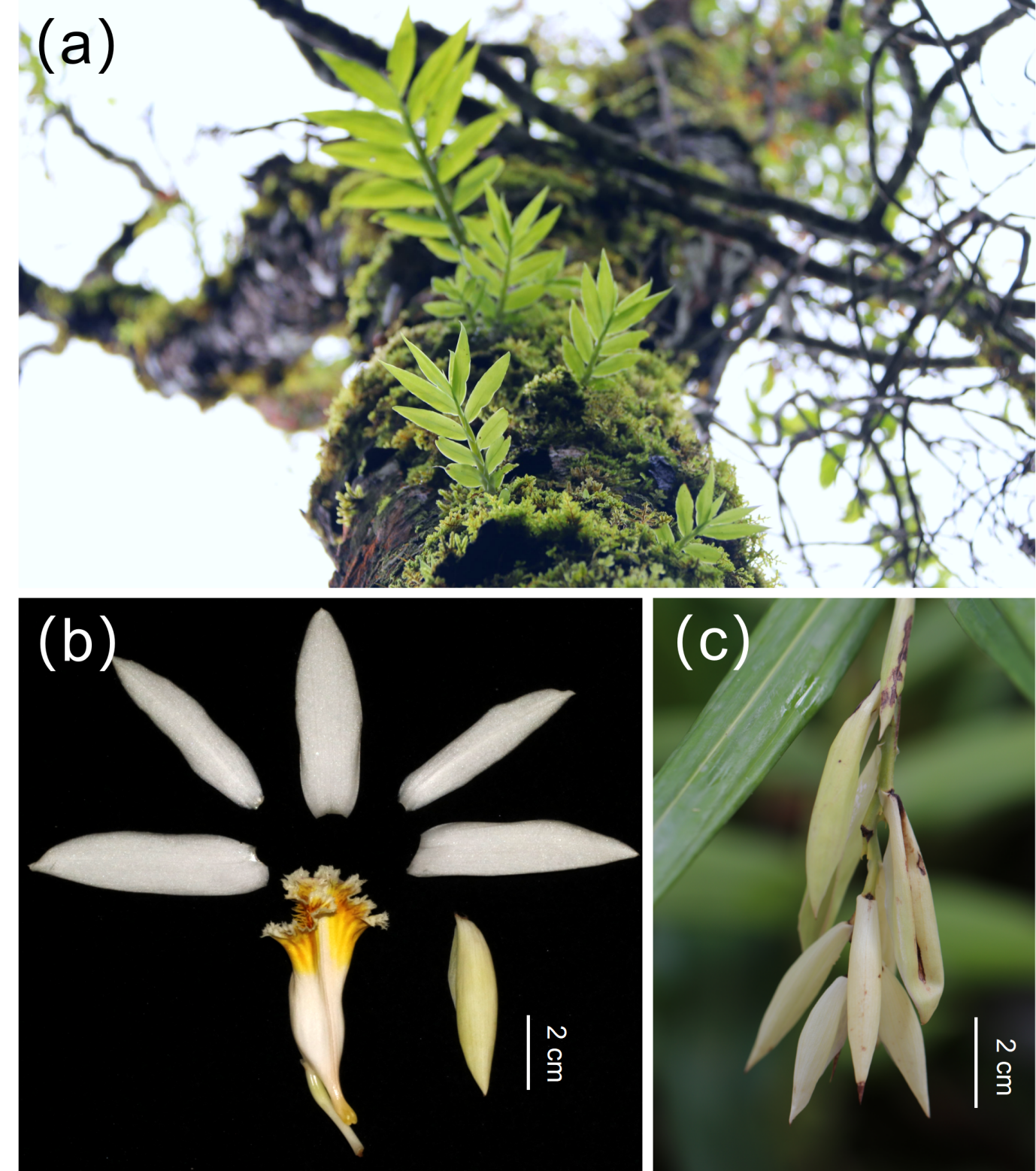-
In this post, Shimao Wu, a Ph.D. student from the School of Ecology and Environmental Science, Yunnan University (I am now a postdoctoral fellow at Kunming Institute of Botany, Chinese Academy of Sciences), discusses and shares his published paper in the Journal of Plant Ecology in 2024, “The conspicuously large bracts influence reproductive success in Thunia alba (Orchidaceae)”.
Why study the bracts of orchids?
In angiosperms, diverse floral traits have evolved in response to various selective pressures. Orchids represent one of the largest plant families worldwide, comprising approximately 30,000 species, and are renowned for their remarkable floral diversity. In particular, the labellum and its ecological functions have been extensively investigated. However, several orchid genera exhibit notably large bract structures whose ecological roles remain poorly understood. In other angiosperms, bracts are thought to contribute to reproductive success by attracting pollinators, supporting photosynthesis, and providing protection against adverse biotic factors—such as herbivory—as well as abiotic stressors, including low temperatures, heavy rain, and intense solar radiation. To explore the ecological function of bracts in orchids, we selected Thunia alba, a species characterized by conspicuous bracts that enclose the pedicel and nectar spur. In populations located in ancient tea gardens of Xishuangbanna, we conducted a bract-removal manipulation experiment to examine how bract removal influences pollinator behavior and fitness in T. alba.
What are the findings of this study?
We found that Bombus breviceps is the only pollinator of T. alba in the study region. During a legitimate visit, the bumblebee enters the flower via the passage formed by the labellum and sepals to forage for nectar. As it retreats, pollinia become attached to its dorsum. When the bee subsequently enters another flower, the pollinia are deposited into the stigmatic cavity, thereby achieving pollination. However, when bracts are removed, the nectar spur becomes exposed. Under this condition, B. breviceps—which exhibits innate nectar-robbing tendency—bypasses the floral entrance and directly bites holes in the spur to access nectar, thus shifting from pollinator to nectar robber.
In populations with bracts removed, the proportion of robbed flowers increased significantly compared to those with intact bracts (from 15.43 ± 3.13% to 90.25 ± 1.88%). Bract removal did not significantly affect the visitation frequency of B. breviceps, but it altered visitation duration and the number of flowers visited per bout, ultimately improving the bee’s foraging efficiency. Under natural conditions, T. alba is pollen-limited. Bract removal significantly reduced pollinia removal (from 56.50 ± 2.65% to 15.47 ± 3.85%), pollinia deposition (from 30.79 ± 2.13% to 9.73 ± 3.37%), and fruit set (from 28.71 ± 2.08% to 8.18 ± 3.39%).
This study demonstrates that in complex pollination-limited environments, large and conspicuous bracts can help prevent nectar robbery and thus enhance the overall fitness of T. alba. This represents a vivid example of the evolutionary arms race inherent in plant–pollinator interactions.
Figure 1: (a) Habitat of Thunia alba. (b) Floral structure of T. alba. (c) Persistent bract of T. alba.

Figure 2: Flowers and fruits of Thunia alba (a, b, c) , Bombus breviceps carry pollinia of T. alba and visit the flowers in different ways (d, e, f)
Some views on ecological research
Nature has an amazing biodiversity, and the complex and interesting relationships between animals and plants require us to go out to the wild to explore and discover the wonderful interactions between them. With curiosity, looking in nature, there will be a surprising discovery. Even an unimpressive flower structure also has an important ecological function and can write interesting ecological stories.
About the author

During my doctoral study at Yunnan University, my supervisor was Professor Jiangyun Gao. I mainly studied the diversity, reproduction, and conservation of orchids in the ancient tea garden ecosystem in southern Yunnan. During the study period, more than a dozen ancient tea gardens in southern Yunnan were investigated, among which nearly 100 species of orchids were investigated, and the reproduction strategies of some orchids were studied, also including some other interesting interactions between plants and animals. After graduating in June 2024, I worked as a postdoctoral fellow at Kunming Institute of Botany, Chinese Academy of Sciences. In cooperation with Professor Gao Chen. I am mainly studying the interaction between animals and plants from the perspective of touch, vision, and smell.
If you are interested in more details about the story, please read our paper “Shi-Mao Wu, Jiang-Yun Gao*. The conspicuously large bracts influence reproductive success in Thunia alba (Orchidaceae)” published in Journal of Plant Ecology (https://doi.org/10.1093/jpe/rtad036).

CiteScore: 5.7
Yuanhe Yang
Bernhard Schmid
ISSN 1752-9921(print)
ISSN 1752-993X(online)





